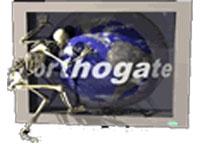|
|

|
« Back
Myofascial Release Therapy for Elbow Pain Associated with Computer Use
|
Posted on: 05/17/2012
|
Physical therapists around the world successfully treat elbow pain caused by many hours using a mouse control device at the computer. One of the helpful treatment tools used is a technique called myofascial release therapy (MFT). In this study from researchers in Malaysia and India, evidence to support the value of MFT is provided.
Lateral elbow pain (along the outside of the elbow) is referred to as lateral epicondylitis. When present in computer professionals, it affects the mouse-operating arm and hand most often. Pain and tenderness can be present at rest but are usually made worse by resisted wrist extension with the elbow straight.
Myofascial release is a hands-on technique. The physical therapist applies a low load, long lasting stretch to the myofascial tissue (connective tissue that support and surround muscles and tendons). The therapist holds the stretch for up to five minutes. The desired result is to increase circulation, reduce sensitivity of nerves, and improve elasticity (flexibility and stretch) of the tissues.
In this study, 68 computer professionals with lateral epicondylitis were divided into two groups. Group 1 received 12 myofascial release therapy treatments over a period of four weeks. Group 2 (control group) received a sham ultrasound treatment to or elbow surgery.
Everyone in both groups was tested before treatment began and retested at the end of treatment (four weeks), and three months later as a follow-up. Pain, function, and disability were measured using a specific test called the Patient-Rated Tennis Elbow Evaluation Scale.
Test results showed a consistent and significant value of myofascial release (MFR) for this type of lateral epicondylitis. The MFR group had a 78.7 per cent reduction in symptoms while the control group had only a 6.8 per cent reduction. And that significant difference between the groups was still observed at the end of 12 weeks.
There were no adverse effects from either treatment but a few of the patients in the MFR group noted their pain increased the first week after the first treatment. Painful symptoms went away within a few days and there was no need for pain medications.
The authors concluded that myofascial release (MFR) was much more effective than sham ultrasound therapy in decreasing pain and improving function in computer workers with lateral epicondylitis. The exact mechanism by which MFR is effective isn't entirely clear. Experts in this area of study believe the technique allows the tendon to heal and restore a more normal soft tissue structure without restrictions. Reorganization of the collagen fibers that make up the connective tissue may be another way in which MFR lengthens the fascia and aids in healing.
More studies are needed to assess the long-term benefits of myofascial release (MFR) therapy. Research to compare MFR to other treatment approaches is also needed. The authors recognize there are different ways to apply myofascial therapy (directly, indirectly, using hands or a special tool designed for this purpose). Each of these methods deserves closer study and comparison as well.
|
References:
M. S. Ajimsha, MPT, ADMFT, PhD, et al. Effectiveness of Myofascial Release in the Management of Lateral Epicondylitis in Computer Professionals. In Archives of Physical Medicine and Rehabilitation. April 2012. Vol. 94. No. 4. Pp. 604-609.
|
|
|
« Back
|
|
|
|
*Disclaimer:*The information contained herein is compiled from a variety of sources. It may not be complete or timely. It does not cover all diseases, physical conditions, ailments or treatments. The information should NOT be used in place of visit with your healthcare provider, nor should you disregard the advice of your health care provider because of any information you read in this topic. |
 | All content provided by eORTHOPOD® is a registered trademark of Mosaic Medical Group, L.L.C.. Content is the sole property of Mosaic Medical Group, LLC and used herein by permission. |
|
